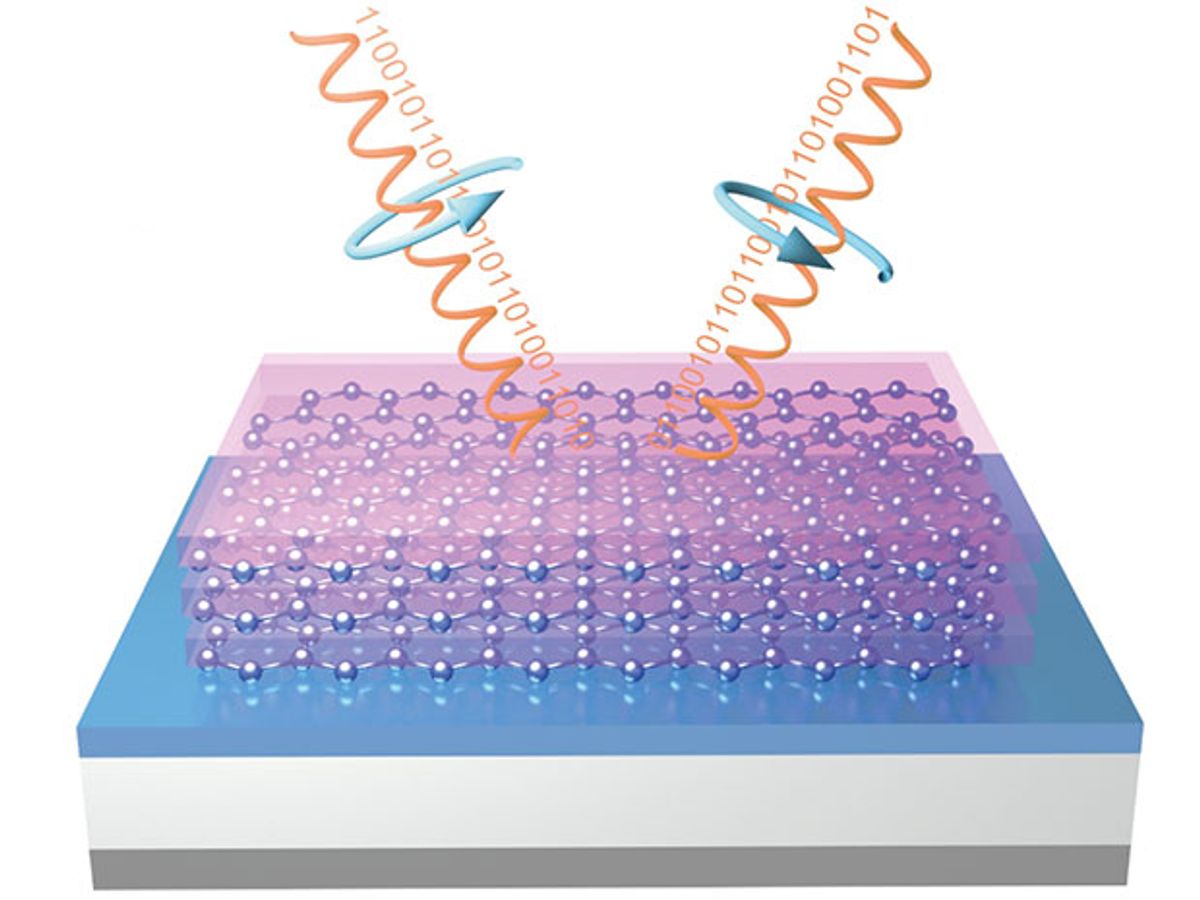Researchers at Ecole Polytechnique Fédérale de Lausanne (EPFL) and the University of Geneva in Switzerland have developed a graphene filter for microchips that could potentially lead to wireless transmission rates 10 times as fast what chips deliver today.
In research described in the journal Nature Communications, the Swiss researchers actually fabricated what is known as a non-reciprocal isolator. The isolator filters backward radiation, preventing waves from being reflected back towards their source.
In normal materials, if waves can propagate in one direction they’re free to come back. Keeping that from happening requires special “non-reciprocal” materials that break symmetry and force light to propagate in a unidirectional way.
At the moment, there are materials such as ferrite that can keep terahertz waves from making a return trip. But the signals lose a great deal of strength even in the direction in which they are supposed to propagate well.
“Graphene, to the best of our knowledge, outperforms any other candidate in the terahertz range,” said Michele Tamagnone, a Ph.D. student at EPFL and one of the authors of the paper,in an e-mail interview with IEEE Spectrum.
That’s important because terahertz frequencies are the name of the game in next-generation mobile devices. Currently, mobile devices transmit data in the gigahertz range or at optical frequencies. But terahertz frequencies are like suped-up engines on open highways, giving mobile devices the ability to transmit data at blazing speeds.
While research in terahertz technology is accumulating fast, there still remains a lack of technological solutions. Many of the building blocks in wireless devices that transmit signals using microwaves or visible light do not yet have analogs that manipulate terahertz waves.
“Our chip partially solves this problem. It’s the first building block of this kind (an isolator in the range 1 THz to 10 THz), which solves an important open challenge,” says Tamagnone.
Tamagnone envisions the chip being used for protecting terahertz sources by preventing reflected waves from returning to their points of origin. And with the cost of graphene decreasing, Tamagnone believes that it can be a very competitive choice for terahertz devices.
While Tamagnone and his colleagues were clearly looking at graphene for future mobile devices using terahertz communication, he believes graphene could even be used for isolators in the microwave range (and hence in today’s wireless communication devices). That could happen if a way to produce large-area, high-quality graphene is developed.
The next step for the Swiss scientists: trying to develop another non-reciprocal device, called a circulator, which Tamagnone says may be even more useful than the isolator.
Circulators are used in microwave communication. When connected to an antenna, they use the antenna to transmit and receive information at the same time. “Graphene has the potential to [allow implementation of] this device at terahertz frequencies,” says Tamagnone.
He added: “We are currently exploring the possibility of using graphene to create tunable antennas—especially antennas that can send a terahertz beam in a precise direction that can be controlled electronically.”
Dexter Johnson is a contributing editor at IEEE Spectrum, with a focus on nanotechnology.



